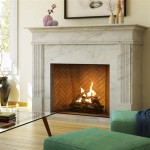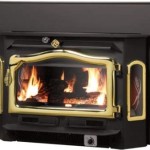Decorating Fireplace Walls: Transforming Your Hearth into a Focal Point
The fireplace, traditionally the heart of the home, offers more than just warmth and comfort. It serves as a central architectural feature and a powerful design element. Decorating the wall surrounding a fireplace presents a prime opportunity to enhance the aesthetic appeal of a living space and express personal style. This article explores various strategies for transforming a fireplace wall into a captivating focal point, considering factors like material selection, style consistency, and spatial harmony.
A fireplace wall’s design significantly impacts the overall ambiance of a room. A well-decorated fireplace wall can elevate a space from ordinary to extraordinary, providing visual interest and contributing to a cohesive interior design scheme. The possibilities are vast, ranging from subtle enhancements to dramatic transformations. The key lies in understanding the existing design elements, personal preferences, and the desired effect.
One must consider the existing architectural style of the home when planning fireplace wall decor. A modern home lends itself to sleek, minimalist designs, while a traditional home might benefit from more ornate and classic treatments. Blending the old with the new can also create an interesting juxtaposition, but it requires careful planning and execution.
Material Selection: The Foundation of Fireplace Wall Decor
The choice of materials for a fireplace wall is crucial, as it dictates the overall look and feel. Common options include brick, stone, tile, wood, and plaster, each offering distinct aesthetic and practical qualities. The selected material should not only complement the surrounding décor but also withstand the heat generated by the fireplace.
Brick remains a popular choice for its rustic charm and inherent durability. It can be painted or whitewashed for a cleaner, more contemporary look. Natural brick offers a warm, inviting texture, while painted brick provides a versatile backdrop for other decorative elements. The color and style of the brick significantly impact the overall aesthetic – a dark, earthy brick creates a cozy, traditional feel, while a light, distressed brick offers a more relaxed, farmhouse vibe.
Stone provides a more rugged and substantial aesthetic, ideal for creating a grand and imposing fireplace wall. Options range from natural stones like river rock and flagstone to manufactured stone veneers that offer a more cost-effective and lightweight alternative. The texture and color variations in natural stone add depth and character, making each fireplace wall unique. Stone can be arranged in various patterns, from stacked stone to precisely cut geometric designs, allowing for customization to suit different architectural styles.
Tile presents a versatile and often cost-effective option for fireplace wall decoration. Available in a vast array of colors, patterns, and materials (ceramic, porcelain, glass, etc.), tile allows for intricate designs and personalized expressions. Consider mosaic tiles for a vibrant and artistic statement, or large-format tiles for a clean and modern look. Tile is also heat-resistant and easy to clean, making it a practical choice for a fireplace surround. When selecting tile, opting for materials specifically designed for fireplace surrounds ensures safety and longevity.
Wood offers a warm and inviting aesthetic, lending a sense of natural beauty to the fireplace wall. It can be used in various forms, from reclaimed wood planks to meticulously crafted wood panels. Remember that wood near a fireplace must be treated with heat-resistant coatings and comply with fire safety regulations. The type of wood and the finish chosen will significantly influence the final appearance. Dark wood stains evoke a sense of richness and tradition, while lighter wood finishes create a more airy and contemporary feel. Consider incorporating wood elements such as a mantel or built-in shelves for added functionality and visual appeal.
Plaster, particularly textured plaster, can create a sophisticated and elegant fireplace wall. Different plastering techniques, such as Venetian plaster or lime wash, can achieve unique textures and visual effects. Plaster also offers the flexibility to be painted in any color, allowing for seamless integration with the room's overall color scheme. Its ability to be molded and shaped also allows for the creation of custom decorative elements, such as relief patterns or intricate designs.
Style Consistency: Harmonizing the Fireplace Wall with Existing Decor
Achieving a cohesive design requires ensuring that the fireplace wall complements the existing style and décor of the room. Consider the color palette, furniture style, and overall ambiance when selecting materials and decorative elements for the fireplace wall. A mismatched fireplace wall can disrupt the harmony of the space, creating a jarring and visually unappealing effect.
For a modern minimalist aesthetic, a clean and uncluttered fireplace wall is key. Opt for smooth surfaces, simple lines, and neutral colors. Consider using a large-format tile or a single slab of stone for a streamlined look. Avoid excessive ornamentation and focus on creating a sense of calm and serenity. A floating mantel made of wood or concrete can add a touch of warmth without compromising the minimalist aesthetic.
Traditional designs often feature ornate details and rich textures. Incorporate elements such as carved wood mantels, decorative molding, and classic tile patterns. A brick or stone fireplace surround with a traditional pattern adds a timeless elegance. Consider incorporating antique accessories, such as vintage mirrors or decorative sconces, to enhance the traditional ambiance.
For a rustic or farmhouse-inspired design, embrace natural materials and textures. Reclaimed wood, natural stone, and distressed finishes are ideal choices. Incorporate elements such as shiplap siding, exposed brick, and a chunky wood mantel. Accessories such as iron candle holders and woven baskets can further enhance the rustic charm.
Eclectic style allows for more freedom and experimentation. Combine different materials, textures, and patterns to create a unique and personalized fireplace wall. However, maintain a sense of cohesion by repeating certain design elements or sticking to a consistent color palette. Incorporating artwork, decorative objects, and personal mementos adds character and individuality to the space.
Regardless of the chosen style, maintaining a consistent visual language is crucial. This involves considering the proportions, scale, and balance of the fireplace wall in relation to the rest of the room. Avoid overcrowding the space with too many decorative elements and strive for a balanced and harmonious composition.
Spatial Harmony: Considering the Room's Dimensions and Layout
The size and layout of the room should also influence the design of the fireplace wall. A grand, imposing fireplace wall might overwhelm a small room, while a subtle design might get lost in a large space. Consider the proportions of the fireplace wall in relation to the room's dimensions and adjust the design accordingly. The placement of furniture and other decorative elements around the fireplace should also be carefully considered to create a balanced and cohesive composition.
In a small room, opt for a lighter color palette and minimalist design to create a sense of spaciousness. Use vertical elements, such as tall mirrors or vertical tile patterns, to visually elongate the space. Avoid bulky furniture or overly ornate decorations that can make the room feel cluttered. A streamlined fireplace wall with a simple mantel can add warmth and character without overwhelming the space.
In a large room, a more substantial fireplace wall can serve as a focal point and anchor the space. Consider incorporating larger-scale elements, such as a floor-to-ceiling stone fireplace or a dramatic wood mantel. Use darker colors and richer textures to create a sense of warmth and intimacy. Arrange furniture around the fireplace to create a cozy and inviting seating area.
Consider the placement of windows and doors when designing the fireplace wall. Avoid blocking natural light or creating awkward traffic patterns. Position furniture and accessories to complement the fireplace wall and create a balanced and visually appealing composition. Pay attention to the flow of the room and ensure that the fireplace wall enhances the overall functionality and aesthetics of the space.
The height of the ceiling should also be considered when designing the fireplace wall. In rooms with high ceilings, a taller fireplace wall can help to fill the vertical space and create a sense of grandeur. In rooms with low ceilings, a shorter fireplace wall can prevent the space from feeling cramped. Use vertical lines and elements to visually raise the ceiling, or horizontal lines to create a sense of width.
Finally, consider the view from other rooms in the house. The fireplace wall should be visually appealing from all angles and contribute to the overall aesthetic of the home. Ensure that the design is consistent with the style and décor of the adjacent rooms to create a seamless and harmonious transition between spaces.
By carefully considering these factors, one can transform a fireplace wall into a stunning focal point that enhances the beauty and functionality of any living space. The key is to approach the project with a clear vision, a thoughtful plan, and a keen eye for detail.

36 Fireplace Decor Ideas Modern Mantel

How To Decorate A Fireplace Wall Without Built Ins Willow Bloom Home

40 Best Fireplace Décor Ideas Mantel

Fireplace Decor Hearth Design Tips

36 Fireplace Decor Ideas Modern Mantel

10 Fireplace Mantel Decorating Ideas Full Service Chimney

How To Decorate Above A Fireplace Worthing Court

40 Best Fireplace Décor Ideas Mantel

Best Fireplace Decor Ideas For Your Home Family Handyman
:max_bytes(150000):strip_icc()/create-a-cozy-fall-fireplace-6a890e0a75a94779be2e6d4ef4784f93.jpg?strip=all)
44 Cozy Ideas For Fireplace Mantels
Related Posts








